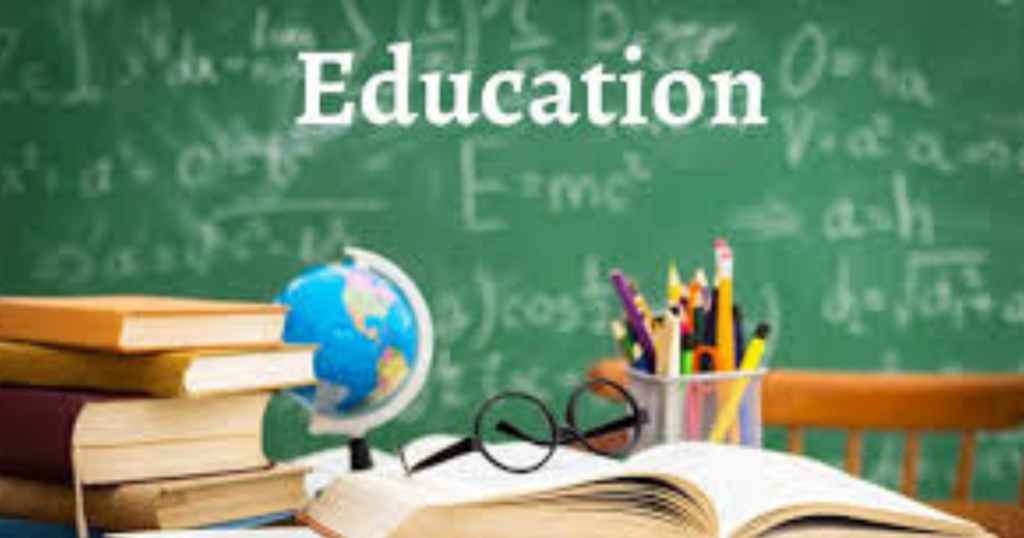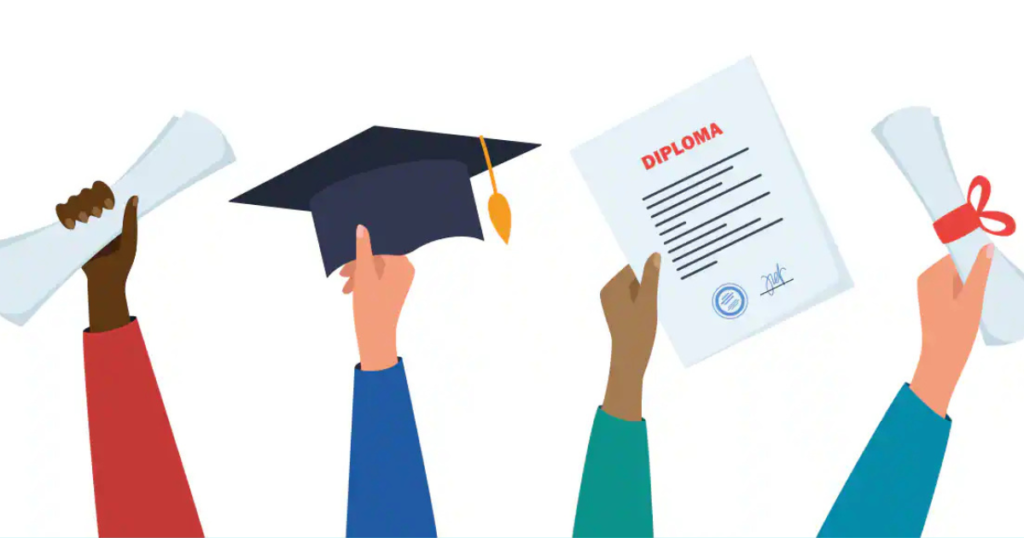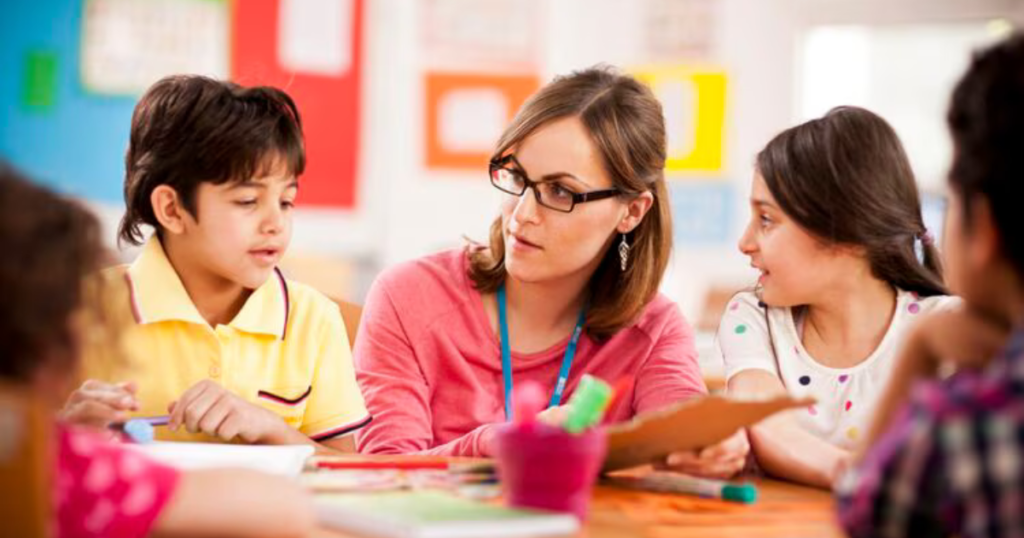
What is Education

Education comes from the Latin words educare (to bring up) and educere (to draw out). It generally means helping people gain knowledge, skills, and values. Some think of education as the process of teaching and learning in schools, while others see it as the result — the knowledge and character a person gains. Education can also mean the academic field that studies how people learn. In simple terms, education helps children learn the ways of their culture and prepares them for life in society.
In early societies, learning was informal—through daily life and by observing adults. But as societies grew, formal education systems with schools and teachers developed to pass on more knowledge. There are also different ways to define education. One kind explains what education is and how the word is usually used (descriptive). Another tells us what education should be like (programmatic). The third is a simple agreement on what the word will mean during a discussion (stipulative), so people don’t have to keep repeating their definition.
What is the purpose of Education
The purpose of education is widely debated, but at its core, it helps people gain the knowledge, skills, and values they need to thrive in society. Some see education as a personal benefit that helps individuals grow, while others believe it’s a public or shared good that strengthens communities and democracies. Economists suggest education can be viewed in three ways: as something people consume, as a public good open to all, or as a shared value that shapes culture and society.
From early childhood to higher education, the goals of education include preparing people for work, helping them think critically, supporting personal growth, and encouraging active citizenship. Universities also aim to create and share knowledge while helping society face big challenges. Despite the different views and goals, there’s no single answer to what education is for. Still, most agree it should help individuals reach their potential, build good relationships, and lead meaningful lives in a changing world shaped by technology and global issues.
What is Educational technology
Educational technology, or EdTech, means using digital tools like computers, software, and apps to help with teaching and learning. It includes things like online learning, mobile learning, and interactive tools such as quizzes or games. EdTech is not just about gadgets; it’s also based on ideas from fields like education, psychology, and computer science. Many companies now make and sell EdTech tools, and they are growing fast around the world. Good EdTech supports both teachers and students.
For example, it can give real-time feedback, save time, and make learning more fun and engaging. Features like animations, sounds, and interactive games can help kids, especially younger ones, understand and remember better. While EdTech doesn’t replace traditional learning, it adds new ways to make education more active, personalized, and meaningful.
What type of Education is college

The question of whether college is worth it has been asked in America for a long time—even since the first college, Harvard, was founded in 1636. At that time, college was mainly for training religious leaders and was only for wealthy white boys, sometimes as young as 14 or 15. Most people couldn’t afford it, and many students didn’t finish. Over time, more colleges were built, more subjects were added, and education became more open—eventually including women and people from different backgrounds.
Today, millions of students in the U.S. go to college to prepare for jobs, grow their knowledge, and improve their lives. Some people start with a 2-year associate degree, while others go for a 4-year bachelor’s degree. After that, students can earn a master’s degree to move forward in their careers, or even a doctoral degree if they want to reach the highest level in education or become researchers, professors, or leaders in their fields. Everyone’s path is different, but college can open up many opportunities—if the costs and challenges don’t get in the way
What is idea in special Education
The Individuals with Disabilities Education Act (IDEA) is a U.S. law that ensures children with disabilities receive the support they need to learn and succeed in school. It says that having a disability should never stop a person from being part of society or reaching their full potential. IDEA has four parts, but the most important for families are Part B and Part C. Part B helps children aged 3 to 21 by providing special education services through an Individualized Education Program (IEP). Part C offers early help to babies and toddlers from birth to age 3 who may have developmental delays. These early services support both the child and the family. Part A explains the purpose of the law, and Part D focuses on improving education through training and resources. Overall, IDEA gives children with disabilities the right to a free and appropriate education and helps them prepare for a successful future.
What is Education requirements
Education is important because it helps people grow as individuals and improves society as a whole. Nelson Mandela once said, “Education is the most powerful weapon which you can use to change the world.” It helps us face big issues like climate change, social justice, and economic inequality. Education isn’t just about reading, writing, or math—it also teaches us values, critical thinking, and how to live meaningfully.
It has four main purposes. First, personal: it helps people understand themselves and the world around them. Second, cultural: it teaches respect for different cultures and helps us understand our own. Third, economic: it prepares students to work, earn, and be financially independent. And fourth, social: it teaches young people to be responsible, caring citizens who can take part in a democratic society. In short, education shapes individuals and builds better communities.
what education is needed to become a teacher
What Education is needed to become a teacher

Teaching is one of the most important and respected professions because teachers help students learn essential knowledge, develop practical skills, and explore their creativity. Teachers work with all age groups, from young children learning to read to adults learning new skills for their careers. While teaching is a stable job with consistent demand, especially in public schools, becoming a teacher usually requires meeting certain educational requirements. In most cases, a person needs a bachelor’s degree to teach in elementary, middle, or high school, and a master’s or doctorate degree is often required to teach at the college or university level.
Some positions, like substitute teaching or vocational instruction, may have different rules depending on the state. To become a teacher, there are typically three main steps: earning a degree, gaining classroom experience, and obtaining certification or a teaching license. During college or through special training programs, future teachers must spend time working directly in classrooms to gain hands-on experience. After that, they must pass state certification exams. There are many types of teaching degrees available, including early childhood education, special education, physical education, secondary education, and education administration. Even if someone has a degree in a different subject, they can still become a teacher through alternative certification programs. Teaching is a rewarding career that plays a key role in shaping individuals and society.
What Education or training is required
Education and training play a key role in preparing professionals in emergency services like firefighting, policing, and emergency medical services. In the past, emergency management had little formal training, but this changed with the creation of FEMA in 1979. FEMA helped define emergency management as a profession by setting standards and offering training through its Emergency Management Institute (EMI).
After the 9/11 attacks in 2001, interest in emergency management grew quickly. More funding, job opportunities, and the need for skilled workers led many colleges and private centers to start offering degrees and certificates in the field. Today, education and training are both important. Education focuses on broad knowledge and theory, while training is more about hands-on skills for specific tasks. Both are valuable in the workplace—training helps employees perform well right away, and education helps them grow professionally over time. When combined, they improve both the organization and the individual.
What is continuing Education courses
ontinuing Education refers to learning opportunities offered to adults who have already completed their basic education but want to keep learning new skills or gain more knowledge. It can include online courses, workshops, certifications, degrees, and seminars. In some countries like the U.S. and Canada, it’s called Continuing Education, while in the U.K. and Ireland, it’s called Further Education. This type of education is especially helpful for people who left college early or want to grow in their careers. It can happen online or in-person, and students may study independently but still need to pass exams. Continuing Education is valuable because it helps people stay updated in a fast-changing world. It also benefits employers by building a skilled workforce. For professionals, it opens doors to promotions, better jobs, and networking opportunities. For schools and universities, it keeps them relevant and helps build partnerships. Examples of Continuing Education include courses, workshops, professional certifications, and attending conferences. Whether for personal growth or career success, Continuing Education is a smart way to keep learning throughout life.
FAQs
1. What is the meaning of education?
Education means learning knowledge, skills, values, and good behavior to grow as a person and live a better life.
2. Where does education happen?
Education happens in many places—like schools, homes, and in daily life through experiences and interactions.
3. Why is education important?
Education helps people read, think, work, and live together peacefully. It also helps them get jobs and solve problems.
4. What are the types of education?
There are three main types:
- Formal education (in schools),
- Non-formal education (in training centers),
- Informal education (through everyday life).
Conclusion:
Education is a powerful tool that helps people grow, learn important skills, and become responsible members of society. It happens not just in schools but also at home and in daily life. Education shapes our future by teaching us how to think, work, and live with others. Whether formal, non-formal, or informal, all types of education are important for personal and social development.



